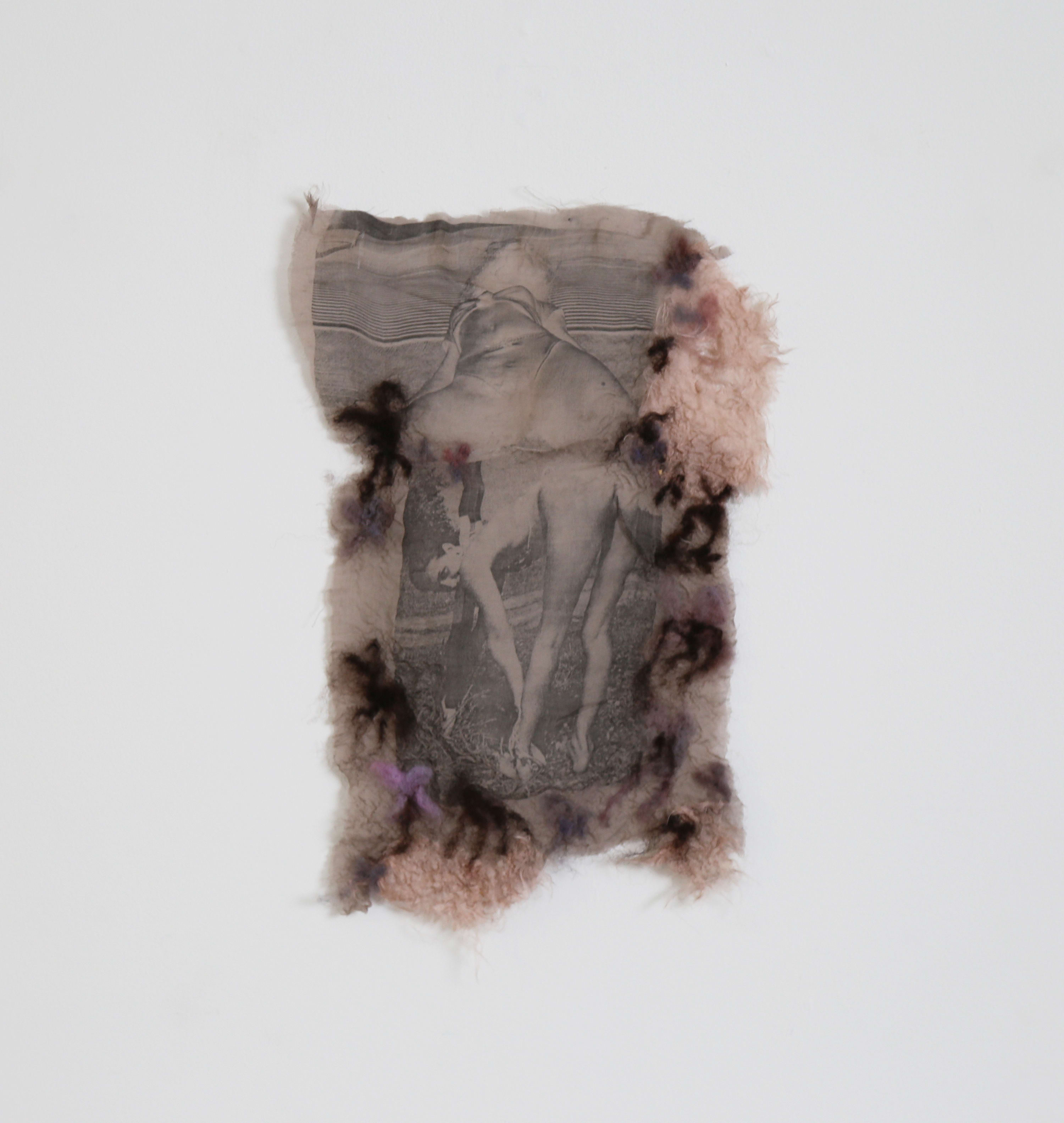-
Dreams in Deixis
-
Dreams in Deixis
July 15th - August 20th, 2022Change is a – perhaps the – fundament of life. Nothing stays the same. Unless we unlock our imaginations and point them to the stars, however, we miss not only the changes but the very chance to make change. Through art, metamorphosis can be generated, and even directed. Indeed, knowing change may be art’s principal purpose.
Dreaming is also a way of effecting and shaping change, a tool – like art, but manifesting spontaneously and beyond conscious control – for seeing the world in a newer and/or deeper light. Dreams do what art can’t, and vice versa. Dreaming complements the making of art, and imagination yokes dreaming and artmaking together. Art renders the world a dream. Dreams render the world art.
The oldest human race on the planet, the aboriginal Australians, dream their way through waking life – and make art that codifies their dreaming. Their dreams are not simply narratives, but maps, guide books, holy scriptures, scientific documents. The aboriginals do not distinguish between the conscious and the subconscious; their vision burgeons in a perceptual twilight, a permanent hypnogogy molded to the land.
Artists, too, dwell in this frontier between outer and inner attention. Younger contemporary artists, in particular, have taken up where the surrealists of the last century left off. Latter-day art-dreamers take special inspiration from the sensuous resonance in the work of female surrealists, from Dorothea Tanning to Frida Kahlo to Kay Sage to Louise Bourgeois, artists who regarded the dream not just as a site for ideological stake and social change but also as a studio in one’s head – and heart, and skin.
This conflation of mind and body, dream and reality, change and fixity, the self and the other(s), appeals most keenly to younger women and gender-fluid artists, born as they’ve been into a society whose guidelines and labels become ever less fixed – to both the gain and the detriment of the non-dominant. Emerging women and queer artists are impelled by the discourse of art to see into the flux and become part of it. “Dreams in Deixis” is not meant as a show of contemporary women and non-binary artists per se, but as exercise of their perceptions and values and the grace, generosity, and virtuosity with which they share their grasp of today’s humanity with the rest of the species.
The artwork comprising “Dreams in Deixis” conflates the raw and the sensuous with the eccentric and fantastical, the elusive and illusory with the coarse and abject. These objects take unlikely form out of unlikely material, at once seductive and vulnerable, anxious and playful. They are you and the other at the same time, a revelation of complementary, even contradictory facets that attests to the complexity of human experience. They are dreams made palpable, change given substance. They are our best nightmares.
- Peter Frank -

Claire Chambless
Claire Chambless’ sculptures, installations, and other works grapple with the spatial politics of ideology and the complex relationship between femininity and aggression. Chambless’ control objects carry strong social and political meaning and are architecturally reimagined to create escape routes, preventing either containment or access. Chambless prioritizes these cultural symbols’ function as signs of physical/ideological containment, enclosure, or apparatuses of support for the physical body/psychic self.
-
Sessa Englund
Sessa Englund's work blends a variety of references — from Northern European folklore to piercings and troll dolls — grounded in cultural semiotics: an exploration of the meanings we assign to materials and processes. In the works in this exhibition, the artist employs a variety of materials — ranging from cherry wood, marzipan, latex, copper dust, and cast resin — to construct a multifaceted speculation on impermanence and identity. Enlisting inanimate objects as stand-ins for implied bodies, Englund's work emphasizes the exchange between aggression and vulnerability; otherness and familiarity; expectations and failure.
-

Lara Joy Evans
Lara Joy Evans’ works deal with issues of techno-primitivism, religious symbology in nature, the digital dark age, and its implications on the collective conscious. Against the backdrop of rising pillars of dirt, dung, and spit, the artist’s termite mounds become a site of worship and primeval mystification. With chambers connected by swollen passages leading to spiking columns and platforms, structures that evoke termite colonies and dripping stalagmites, and mud spires that ascend towards the sky, Evans’ termite mounds connect heaven and earth in an alchemical union.
-
Rosemary Holliday Hall
Rosemary Holliday Hall is a transdisciplinary artist whose evolving projects explore conceptions of nature, time, and perception through a wide range of media and collaborations. In Hall’s Enclyclia imagosis the artist relates the physical process of metamorphosis as a means of investigating the various ways in which we make sense of the world and relate to ourselves and others through imagination, metaphor, and material. These sculptures consist of diaphanous oxidized fabric stretched across a steel rod frame, evoking the metallic gold casing of insect chrysalises. Hall made these artworks to imagine what it would be like to be a caterpillar in a self-made structure, whose purpose was to hold her disintegrated body as it transforms into another body.
-

Isabella Kressin
Isabella Kressin’s practice focuses on the use felting and collage techniques to manipulate both found and personal images. The artist is principally interested in the process of metamorphosis, and how it relates to the body and its immaterial forms. Her pieces are intimate, and draw on themes found in mythology, as well as memories of her adolescence. Flirting between sculpture and photography, Kressin employs a technique of laser printing black and white images onto sheets of silk encased in nebulous billows of merino wool. The artist takes the female body as her subject of choice, portraying them in various states of nudity, relief, ecstasy, and joy.
-

Amelia Lockwood
Amelia Lockwood’s artworks trace connections from geological formations, esoteric map systems, and the constructs of modern-day board games. The overlapping aesthetics of both create structures in which the mind and body are aligned towards achieving a resolution through navigational strategies. Lockwood’s practice aims to highlight both the utilitarian nature of ceramics and the cultivation of the human spirit. In the exhibition, Lockwood’s candelabra sculptures act as metaphorical defenses against the dark. With their dancing flames and totemic strength, the symbolic and visual language of these works beget power and resilience.
-

Carlotta Lücke
Carlotta Lücke’s practice centers on the illusion of authenticity and the representation of collected personal and shared experiences. Lücke’s silicon composites cull together cultural references, collective stories, and shared experiences that appear spontaneous and arbitrary, but are highly composed compositions where everyday tropes are collected, sampled, and reworked over time.
-

Kira Scerbin
Kira Scerbin’s artworks are meditations on having a body and existing in a physical world that is built upon perverse and primal urges. The artist’s paintings beguile the viewer into spaces that are at once uneasy and obscure. Scerbin’s humanoids reveal the anxiety and malaise of having a physical body by representing figures that appear mischievous and peculiar. These creatures, with their disquieting glares and unearthly presence, relate Scerbin’s interest in the perspicacity of strangeness.
Dreams in Deixis: The Women's Show
Past viewing_room










